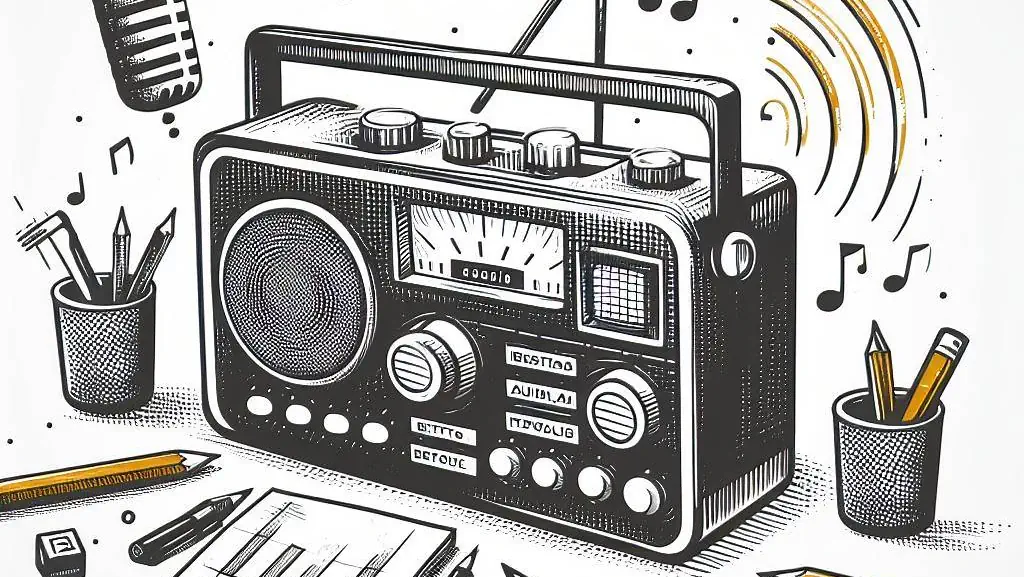 illustration: bing.com/create
illustration: bing.com/createThe latest generation of Digital Audio Broadcasting technology, known as DAB+, uses digital audio encoding to transmit radio signals. Unlike analog radio, which uses amplitude modulation (AM) or frequency modulation (FM), DAB+ uses digital frequency modulation (DFM). DFM allows for transmitting more data using the same amount of bandwidth, providing higher sound quality and better resistance to interference.
Advantages of DAB+
Higher sound quality. DAB+ offers better sound quality than analog radio. DAB+ can transmit audio at resolutions up to 24-bit/96 kHz, delivering clarity and detail unavailable with analog radio.
Better interference resistance. DAB+ is more resistant to interference than analog radio. This means cleaner and more audible sound in areas where signal interference occurs.
More features. DAB+ allows broadcasters to offer additional services, such as:
- text accompanying audio
- subtitles
- weather information
- traffic information
- news updates
Disadvantages
Hardware requirements. To listen to DAB+ radio, you need a DAB+ receiver. DAB+ receivers are available on the market but may be more expensive than analog radio receivers.
Availability. DAB+ is still in the implementation phase in many countries, including Poland. Not all radio stations offer DAB+ yet, and DAB+ coverage may be limited. According to Poland’s National Broadcasting Council:
- 94% of new cars in Europe come with built-in DAB+ digital radio
- in Poland, this percentage is 92%
DAB+ is a technology with great potential that could change the way we listen to radio. Whether it will become a universal radio standard will impact radio’s future as a medium.
Improving DAB+ receiver availability and expanding DAB+ coverage are the main challenges facing this new technology today. If successful, DAB+ could paint the future of radio in entirely new colors.
COMMERCIAL BREAK
New articles in section Media industry
Advertising market 2025. Poland, Europe and the World
Marcin Grządka
The global advertising market is growing by 8.8% in 2025 and will reach a value of 1.14 trillion dollars. The industry result in Europe records slightly lower dynamics, at the level of 5.8%. In this comparison, Poland performs clearly above the average. We will record an increase of 8.9% this year and a value of 18.56 billion PLN - estimates WPP Media in the annual report "This Year Next Year".
The print media market 2025. Three global trends
Krzysztof Fiedorek
The market value is 359.53 billion dollars, yet the erosion is visible to the naked eye. The decline for newspapers will amount to -2.3 percent. Despite this, print retains strength: it generates 76 percent of subscription revenues and enjoys 82 percent consumer trust. The future of the industry is defined by hybrid strategies and niche specialization.
Journalism in the age of AI. Why people prefer humans over machines
Krzysztof Fiedorek
Only 12% of people accept news created solely by AI, while 62% prefer those written by humans. At the same time, only 19% notice labels indicating the use of artificial intelligence, while younger audiences ask AI to explain the content to them. These are the findings of the Reuters Institute report on artificial intelligence in media.
See articles on a similar topic:
Poles on the Internet. RegionyNEXERY 2024 Report
KFi
The Internet not only connects people but also changes their daily habits in ways that seemed unattainable just a few years ago. Over 40% of Poles work remotely, and IoT devices are gaining popularity in rural areas. The #RegionyNEXERY 2024 report reveals surprising facts about the digital reality.
Trends in Media and Entertainment. DataArt Predictions for 2019
KF
Increasing consumption of content on mobile devices, growing demand for on-demand services, and the rapid development of user-generated content are the trends expected to dominate the tech sector in 2019, according to DataArt, a global technology consulting firm.
Energy under attack. Disinformation threatens Poland’s power transition
KFi
One in five online messages about energy may be fake. Between 2022 and 2025 nearly 70,000 publications warning and condemning disinformation in this strategic sector were recorded in Polish media. They generated a reach of 1.19 billion impressions.
Decline in Trust in Media. Analysis of the Reuters Digital News Report 2024
Krzysztof Fiedorek
The “Digital News Report 2024” by the Reuters Institute for the Study of Journalism highlights alarming trends concerning the declining interest in news and decreasing trust in media. These changes are not temporary but have become a long-term trend.





























